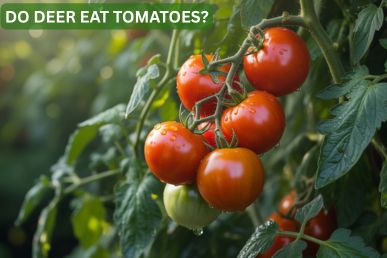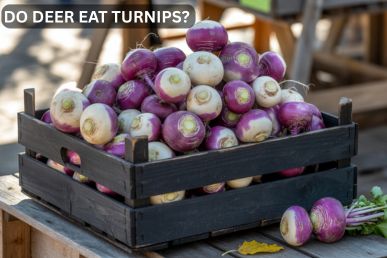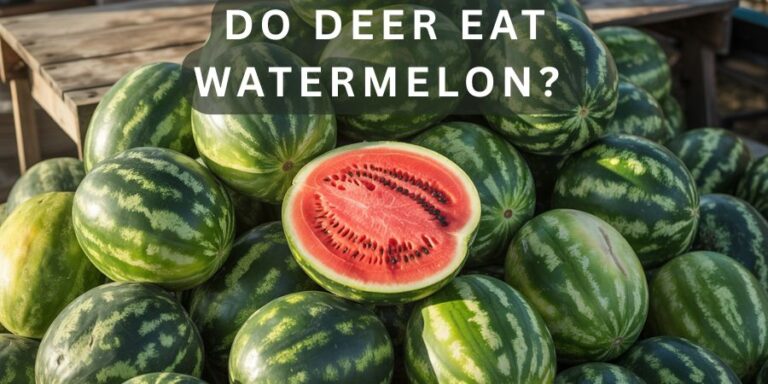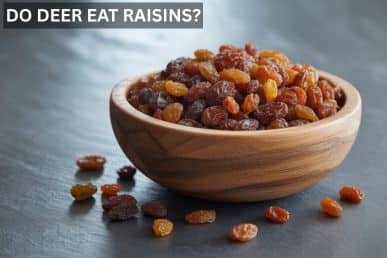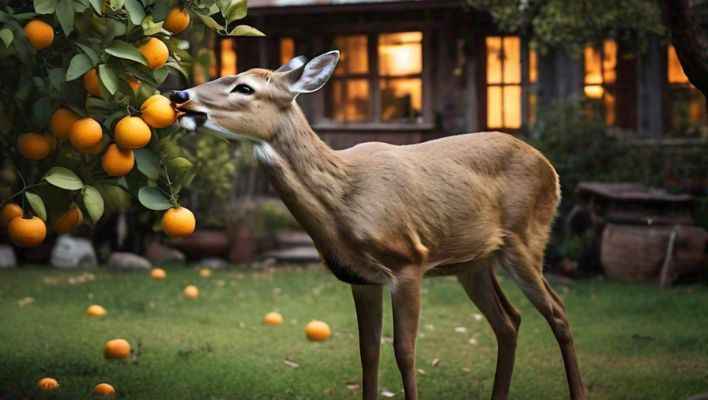Do Deer Eat Walnuts? What Every Gardener Must Know

When many gardeners, farmers, and homeowners see deer in their yards, one question that inevitably comes to mind is, Do deer eat walnuts and walnut trees?
Deer are famous for munching on plants, especially when other food is hard to find, from fruits and vegetables to even root crops like carrots. They readily nibble on acorns, hazelnuts, and other accessible food sources. They also commonly eat:
- Young tree saplings
- Tender twigs
- New leaves
During the colder months, when food becomes scarce, deer get even less picky. However, mature black walnuts have a natural trick to protect themselves. They produce a chemical called juglone.
Juglone deters many animals, including deer, from eating the nuts and harming the tree too much. It’s the tree’s way of fighting back against unwanted diners!
While deer might cause some damage to very young walnut trees, the nuts themselves are usually safe thanks to juglone.
But how much damage can deer really do to walnut trees, and which parts are they most interested in? Let’s explore how deer interact with walnut trees and what you can do to protect your landscape.
Do Deer Eat Walnuts?
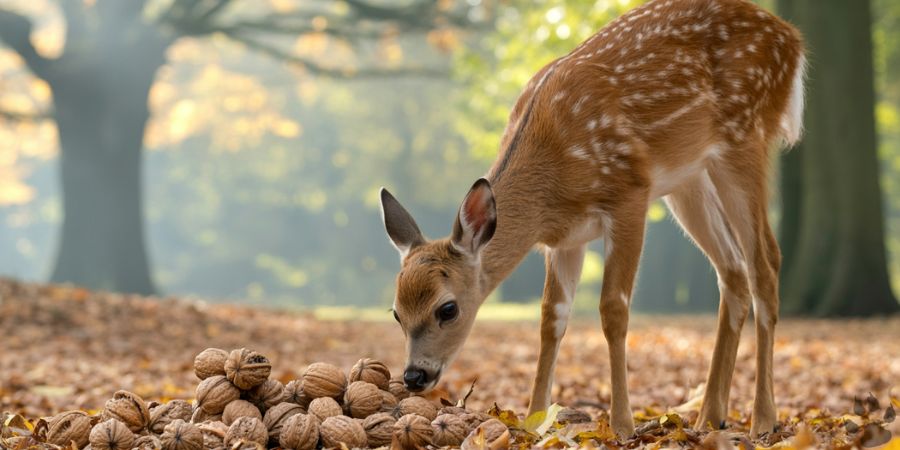
Yes, deer definitely eat walnuts, especially when they find them fallen on the ground. While walnut shells are super hard, hungry deer can crack them open or munch on younger, softer nuts.
These nuts are just one of many wild foods deer enjoy, though they often prefer juicy fruits like watermelon when available.
However, for farmers growing valuable crops like young walnut trees, deer attention can be a real problem, as it might hinder the trees’ growth.
Simply scattering old walnut shells around, hoping it will deter the deer, is often counterproductive—the deer might actually be attracted! This is similar to how leaving out pumpkins in the fall can unintentionally feed wildlife.
Instead of relying on that, finding a more effective method for deterring deer is crucial. Using a proven alternative, like a sturdy fence, is a much better plan to protect those trees.
Do Walnuts Attract Deer?
Many people plant walnut trees hoping they’ll attract deer for viewing or hunting. But do the deer actually come to feed?
While deer prefer acorns, peanuts, and other nuts early in the season, they will eat fallen walnuts, especially later when tastier options are gone.
Hunters often see signs of deer activity around walnut trees, like a buck using the trunk to rub his antlers. Whole herds have been observed foraging there.
Scouting a good hunting spot? Look for walnut shells and tracks! One hunter shared a Reddit post that confirmed this, seeing plenty of deer near his walnuts. So yes, walnut trees can definitely attract hungry deer.
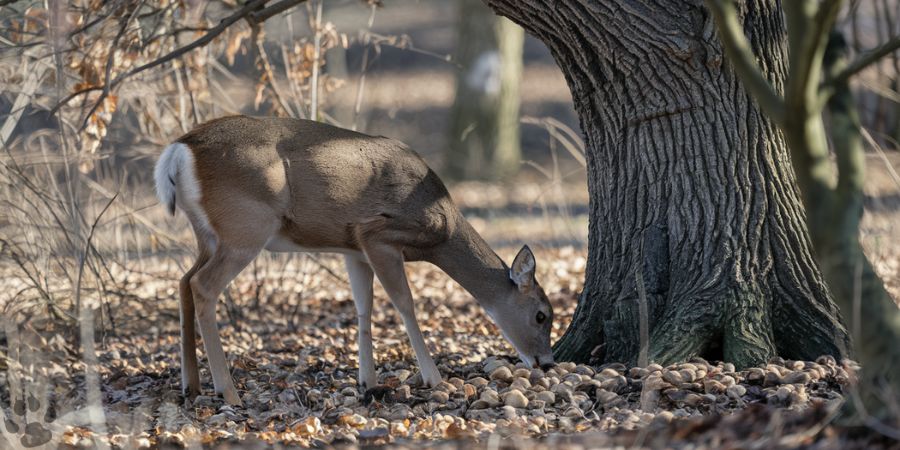
Can deer eat walnuts in the shell or only unshelled walnuts?
Deer absolutely love walnuts once they’re out of the shell! They prefer unshelled walnuts, meaning the hard outer shell has been removed, leaving just the tasty kernel inside.
A doe (female deer) or a fawn (baby deer) finds these easy and delicious to eat. You might see this behavior if they visit yards where people leave out human food like cracked nuts or fruit scraps, such as oranges.
Observing deer in my own backyard, I’ve noticed they gobble up shelled pieces quickly. However, eating a whole walnut still in its hard shell is a different story. It’s incredibly difficult for them.
Deer lack the strong jaws needed to crack or crush that tough shell with enough force. They simply can’t break it open like a squirrel can.
So, what about shelled walnuts in the wild? Deer might nibble on black or white walnuts if the outer green husks are decomposed or decayed, making them softer and easier to manage.
Sometimes, if a walnut is already soft, perhaps from lying on damp ground, a deer might manage to crush it. But generally, finding a deer that has successfully cracked a fresh, hard walnut shell is rare.
Hunters on outdoor forum discussions often share that deer usually ignore intact walnuts. While deer interact with many food sources, they aren’t naturally accustomed to dealing with such hard shells as some other animals are.
Do Deer Eat Walnut Tree Leaves?
Yes, deer definitely eat walnut tree leaves, especially fresh, young ones. While they prefer easier snacks, they won’t pass these up. I’ve seen them stand tall on their hind legs to reach and nab hanging leaves from low branches.
If the wind blows leaves to the ground, they’ll happily munch those too! It’s all about what they can easily reach on the trees.
Do deer eat black walnuts specifically?
While deer might eat many plants, black walnuts are a different story! The actual nuts inside are super hard for deer to crack open.
They lack the strong teeth needed to break through the incredibly tough shells that give these nuts their famous cover. Also, these shells have a pungent, sticky scent or smell that seems unpleasant to many mammals, including deer.
So, in most cases, deer don’t eat the nuts themselves, much like how they often ignore tough or underground crops like potatoes. However, deer definitely interact with walnut trees, especially during the harsh winter months when food is scarce.

Their diet might include easier-to-eat parts like young twigs and leaves. More noticeably, male deer, called bucks, exhibit a behavior where they rub their antlers against young tree bark.
This rubbing behavior helps bucks remove the velvet from their antlers and mark territory, but it can severely destroy the bark and woody layer beneath. This injury often kills young trees. It’s important to protect young walnut trees from this damage.
Signs Deer Are Feeding on Your Tree

How to Protect Walnut Trees from Deer
Lure Them Away
Instead of fighting deer near your valuable walnut trees, lure them to a safer spot! Try sacrificing small portions of your open field, preferably in sunny (sun) areas away from the tree edges.
In these designated sections, plant super palatable (really tasty!) crops that deer love to eat, like hemp or sunflowers, or even soft-stemmed garden vegetables such as tomatoes, which deer can quickly devour. Think of it like setting up a special deer dinner table.
Cultivating these attractive forages gives deer easy access to preferred food, making them less likely to bother your walnuts.
To further protect the area right around your trees, planting deer-resistant plants along the field edges creates a less appealing barrier.
- Plant irresistible crops (like hemp) in chosen sections of an open field.
- Use deer-resistant plants near your walnut trees as a protective border.
Use Agricultural Fencing
Want to stop deer and other wild animals from eating your walnut trees? Fences are super effective protection! But before you build, check the local laws and regulations in your state or region.
These guidelines tell you what type of fence is allowed and how high it needs to be. Different fence types serve as great animal deterrents:
- Strong wire mesh fences are tough for deer to push through.
- Tall plastic fences can also block their view and path.
- Electric fences give a safe but surprising zap that teaches deer to stay away. Following the rules helps make sure your measures work perfectly to keep your walnuts safe!
If you’re ready to invest in a physical barrier, this easy-install deer fencing kit is a great place to start.
Natural Repellents
You bet deer love young walnut trees! To keep them away, effective protection combines several measures. Strong smells are great deterrents.
Plant things deer hate nearby, like strong-smelling herbs. You can also make homemade sprays: a concoction using garlic, chili peppers, or even fish oil makes leaves taste awful.
Egg-based repellents work similarly but need to be reapplied regularly after rain. For a more constant, suitable scent, try hanging bars of strong soap or using smoke (like from a small, contained smoker—used carefully!).
Physical barriers help too; good fencing is super effective, though expensive. An old trick? Setting up an empty beehive nearby can sometimes scare deer off, thinking bees are there!
Using a few methods together usually works best to keep your walnuts safe.
What Nuts Do Deer Prefer Instead of Walnuts?

What Animals Eat Walnuts?
Below is a list of animals whose diet includes walnuts.
- Squirrels
- Raccoons
- Bears
- Deer
- Chipmunks
Conclusion:
While deer might occasionally eat fallen walnuts, especially if they are already shelled, these nuts are not a preferred food source. Deer tend to prioritize easier treats like apples or acorns when available.
Black walnut trees have strong natural defenses, including a chemical called juglone, making the nuts and the surrounding area less tasty. Deer mostly focus on easier-to-reach leaf browsing on other plants.
However, young walnut trees are vulnerable, not just to nibbling but also to damage from antler rubbing by bucks. To protect your trees, especially year-round but most importantly when they are small, consider using fencing or deer repellents.
Creating alternative food plots with plants deer love more can also help draw them away. Understanding deer behavior is valuable for managing your landscape.
By knowing what they like and when they might cause trouble, you can help keep your walnut trees growing safe and sound.
Frequently Asked Questions:
Are walnut trees deer resistant?
While deer eat many plants, walnut trees aren’t their favorite, making them somewhat deer resistant, especially older trees. Hungry deer might munch on young leaves, tender twigs, or saplings. Bucks also cause damage by rubbing their antlers against trunks. Mature trees are tougher. Their nuts are often protected by a strong chemical called juglone. This juglone deters much feeding, helping the trees survive.
Can deer crack walnut shells?
Deer sometimes eat walnuts, but whole, hard shells are too tough to crack! Their teeth and jaw strength aren’t built for it. They prefer soft, decayed walnuts or ones already cracked open.
Is juglone harmful to deer?
Walnut trees make a natural chemical called juglone to protect themselves. It’s a deterrent, irritating to deer if eaten. While not a strong poison, juglone makes parts like nuts unappealing. So deer avoid them!
How do I protect young walnut saplings from deer?
To protect your young walnut saplings from hungry deer, start by building a strong fencing barrier using wire mesh around your trees—some even add a low electric wire for extra safety! You can also mix garlic, chili, or egg-based spray repellents as stinky deterrents to keep deer away. Another trick? Plant resistant plants like hemp or sunflowers nearby to lure them toward an alternative food source instead. For individual saplings, slip plastic tree guards or tubes around their trunks to shield them from rub damage. These natural methods provide a simple barrier so your walnuts grow safely!
Do deer eat black walnut leaves?
Yes, deer will eat black walnut leaves, especially the young, tender ones high up. They sometimes stand on their hind legs to reach them. Deer also munch on leaves that have fallen to the ground.
Do deer eat walnut tree bark?
Young deer and especially bucks often damage walnut tree bark. They don’t eat the bark. Instead, bucks strip it off while rubbing their scratchy antlers. This harm causes significant damage and can kill young walnut trees.
Can I feed walnuts to deer?
You might see deer eat fallen walnuts, especially in winter times of food scarcity when other sources are limited. While they enjoy eating them if offered, walnut treats should only be given occasionally. Remember, their main food is tree foliage, not nuts.
What animals can eat walnuts?
Squirrels, raccoons, bears, deer, and chipmunks are some of the animals that gardeners and farmers have seen eating walnuts in their yards.


